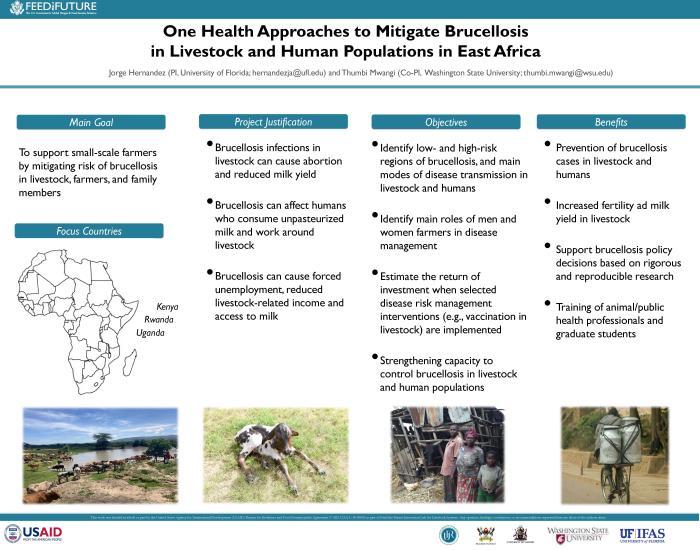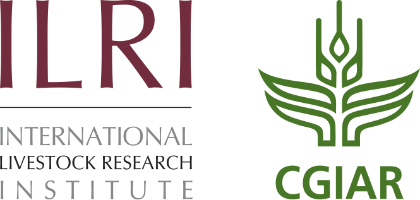One Health approaches to mitigate Brucellosis
- Research Project Location: Rwanda, Kenya and Uganda
- Timeframe: October 2023 - October 2026 (Terminated in February 2025)
- Funding: USAID
Introduction
Brucellosis remains a disease of paramount importance to animal and human health authorities in East Africa because of its socio-economic and public health consequences. In livestock, the burden of brucellosis is higher in pastoral systems compared to zero-grazing or smallholder systems. Pastoral systems allow different herds to mix at water points, grazing areas, or shelters. Because culling and other methods of brucellosis control are not practiced in most pastoral systems, long-term chronic Brucella spp. infections can cause multiple abortions and a steady source of Brucella spp. exposure and disease transmission. In humans, Brucella spp infection is associated with the consumption of raw milk or exposure to livestock during parturition events.
The success of brucellosis control programs in livestock and human populations at the national level requires health and economic systems supported by sound research, including gender analysis and studying ways to effect behavioral change and policy. Although multiple studies have confirmed the disease's presence in human populations in East African countries, appropriate data for decision-making is lacking.
The overarching project goal was to support small-scale farmers by mitigating the risk of brucellosis in livestock, farmers, and family members.
Project Objectives
- Increase the understanding of brucellosis risk and transmission patterns between livestock and humans in East Africa.
- Develop and validate the risk and behavior science-informed control measures to mitigate the spread of brucellosis from livestock to humans via enhanced production practices and proper food safety procedures with consideration of gendered roles and incentives and opportunities to empower and ensure inclusive benefits to women, men, girls, and boys in the adoption of practices to mitigate the spread of brucellosis.
- Strengthen the capacity to control brucellosis at the local, national, and regional levels, including government, academic, and private sector organizations.
Research Approach
In this three-year initiative, research studies would engage with households with livestock in four provinces in Rwanda and Narok County in Kenya, where the prevalence of brucellosis and disease transmission is high. In addition, patients that present to hospitals with fever combined with chills, headache, or fatigue will be tested for brucellosis, and the most likely source of infection will be determined (e.g., consumption of unpasteurized milk or exposure to aborted fetuses in livestock). Field studies will examine the roles of men and women farmers in livestock production and disease management, particularly brucellosis. Economic assessments will measure the return on investment when selected interventions (e.g., brucellosis vaccination in livestock) are implemented at the regional level. Capacity-building activities will include training of animal health and public health professionals, as well as graduate students from Kenya, Rwanda, and Uganda, in disease risk assessment, risk management, and risk communication. Effective, locally adaptable, and gender-responsive control strategies will be developed. Finally, in the third year, a research-policy forum will be organized to present research results and policy options (e.g., enhanced surveillance and biosecurity, education and communication, vaccination in livestock) that can be considered for possible implementation by animal health and public health authorities in focus countries. When possible, policy options will be supported by socio-economic assessments that compare public health, economic consequences, or potential returns on investment to highlight the potential effects of each option (e.g., business as usual vs. vaccination in livestock).
Principal Investigator (PI) and lead institution

Co-Principal Investigator
Thumbi Mwangi, Washington State University
Additional collaborators
- University of Nairobi
- University of Rwanda
- Makerere University
Resources



.png)




